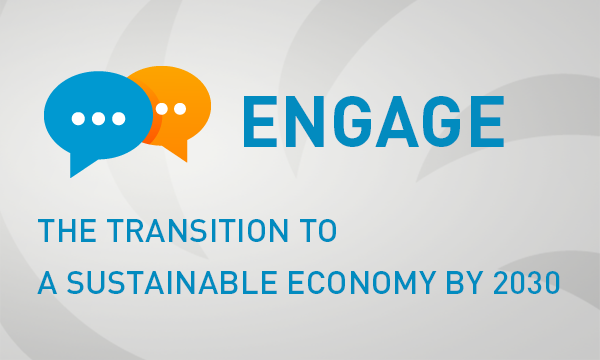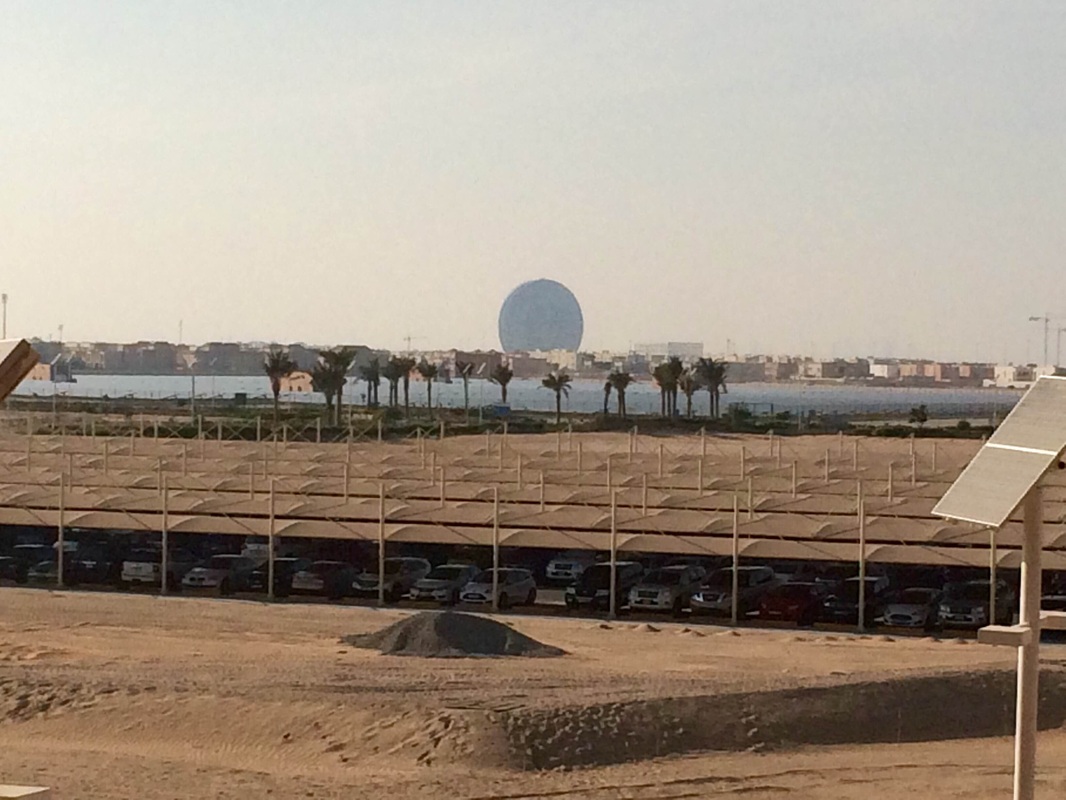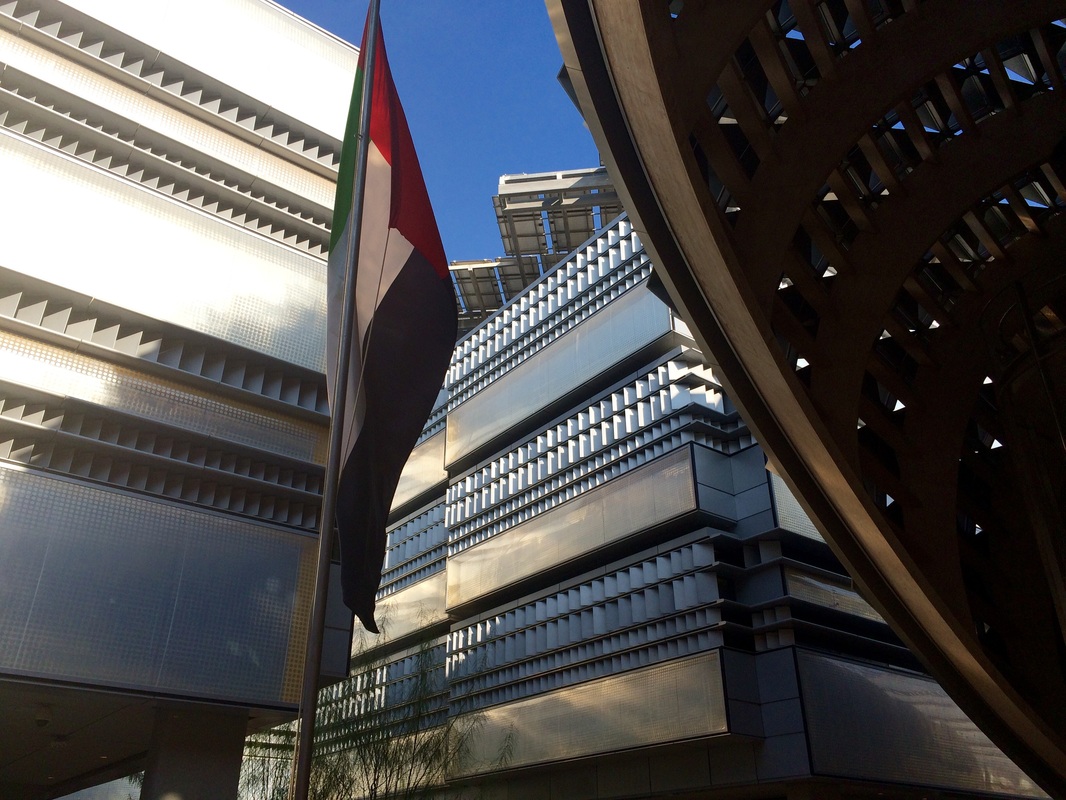Masdar’s Global GenZ Sustainability Survey found that we believe that climate change is the biggest threat over the next decade. The solution to mitigate climate change lies in energy and we need to develop energy technology that is not only clean and reliable, but also affordable and abundant. Small modular reactors are simple and flexible and can be scaled up or down according to needs. This advanced nuclear technology is ready to be deployed by 2026. All we need is additional investment for commercialization and push from policymakers to make it happen.
|
This video is my entry to the 2017 Masdar Engage Blogging Contest, part of Abu Dhabi Sustainability Week. Vote here for my video!
Masdar’s Global GenZ Sustainability Survey found that we believe that climate change is the biggest threat over the next decade. The solution to mitigate climate change lies in energy and we need to develop energy technology that is not only clean and reliable, but also affordable and abundant. Small modular reactors are simple and flexible and can be scaled up or down according to needs. This advanced nuclear technology is ready to be deployed by 2026. All we need is additional investment for commercialization and push from policymakers to make it happen.
0 Comments
By Lenka Kollar This post is part of Masdar's Engage Blogging Contest for Abu Dhabi Sustainability Week 2016. Vote for my entry here. From putting a man on the moon to civilian use of GPS, scientific innovation has often been the result of public-private partnerships in which the government sponsors basic research and private companies continue development and commercialize the innovation. Governments can adopt policies to make this process more efficient by incentivizing companies to innovate and help solve the world’s biggest challenges today, including the transition to a sustainable and clean energy economy. Successful government innovation programs have often involved two things: research and incentive. The government needs to provide funding and facilities for basic scientific research that companies do not have the resources to undertake. Take for example the development of first mass-produced plug-in hybrid electric car in the United States, the Chevy Volt. Government-sponsored research at Argonne National Laboratory created the technology for the battery that powers the car in electric mode. Chevrolet, which did not have the resources and facilities to do this kind of research, then commercialized the batteries for use in the cars. Private companies can also get started earlier in the process by utilizing existing government or university facilities and funding for research. For example, Masdar City in Abu Dhabi creates a community and provides facilities for research in sustainable technology. With Siemens regional headquarters onsite and other companies taking part, Masdar City provides for an innovation hub that fosters public-private partnerships. More than making basic research and facilities available to companies, the government can also incentivize private innovation with support and funding. A recent and ongoing example of this is the US Department of Energy investment in innovative small modular reactors for clean and sustainable energy production. Through a five-year cost-share agreement, the government invests up to half of the total project cost, with the project’s industry partners matching this investment by at least one-to-one. The Department of Energy also provides assistance for engineering and design certification with the regulator. Government support is essential for both established companies and start-ups in developing such a complex technology with heavy regulation. Governments can develop policies to streamline public-private partnership and enable the private sector to develop the goods and services necessary for a global transition to a sustainable economy. Governments should fund and provide access to scientific research and facilities and incentivize companies to innovate with support and investment, as showed in the examples above. In addition, the type of government support—research, facilities, funding, etc.—needs to be tailored to different technology sectors and economies. Advanced clean energy systems in developing economies may require a more hands-on government approach while energy efficiency could involve simple government grants to develop innovative products in this area. There is not one specific approach to fostering public-private partnerships but many pathways for the government to provide support and incentives for innovation in sustainable technology. The government should be an enabler (through effective support), rather than a disabler (through stricter regulations), in order to see the kind of large-scale transition that we need to achieve a sustainable economy. See my posts from previous Masdar blogging contests: Nuclear Energy's Role in Sustainable Development (2014) and Sustainable Urbanization 2015 to 2030 (2015).
By Lenka Kollar During my MBA at INSEAD, I've had the chance to take classes at the Abu Dhabi campus and do projects related to the UAE's move towards a knowledge-based economy. In order to have a sustainable industry based on technology and innovation, a trained workforce is needed to feed it. Science, technology, engineering, and math (STEM) education is crucial to foster a culture of innovation. Students have to gain interest in STEM at an early level to then choose to study it at university and form a career in STEM. While in Abu Dhabi last week, I participated in the Google STEM Forum, also hosted by the Al Bayt Mitwahid Association. The was event aimed at bringing policymakers, technology companies, educators and non-profits together to promote innovation in science and technology through partnerships in education, programs, and research. (Read more about the event here.) My INSEAD classmate, David Nothacker, and I had the opportunity to present our class project on STEM, in which we analyzed the culture, education, infrastructure, incentives, industry, and governance of STEM in different countries. We derived best practices from each of these levers to gain insights for Abu Dhabi and the UAE in transitioning towards a knowledge-based economy. We also learned about the STEM education initiatives of Google in the region. In particular, they established an innovation hub in partnership with Al Bayt Mitwahid that gives students an opportunity to gain hands-on experience with robotics. This fosters a culture of innovation and gets kids excited about studying science and technology and pursuing careers in these fields. The video below sends a very inspiring message. This was a very exciting project and experience for me because I'm very passionate about revitalizing STEM education and I've worked on nuclear science outreach to students in the U.S. I'm primarily concerned about the diversity of students in STEM, especially women. It's great to see that the government, industry, and schools are working together to get kids excited about science.
By Lenka Kollar Vote for my essay on Sustainable Urbanization in the Masdar Engage blogging contest here! I had the chance to tour a unique development while visiting Abu Dhabi with INSEAD. As I wrote in my earlier posts, Wealth Before Development and Beyond the Oil Era, Abu Dhabi is investing in diversifying its economy from oil. One of these initiatives, sponsored by Mubadala, is Masdar City. This development is completely sustainable and carbon-neutral and currently houses the Masdar Institute of Science and Technology, in partnership with MIT. The following are some pictures and things I learned from the tour. The entrance into Masdar City, you can already see the unique building structures and solar panels. Many of the structures in the city are based on how previous generations kept their settlements cool before development. The artistic panels on the student dormitories provide privacy and shield the sun. The wind tower directs the cooler upper-level winds into the square below. Looking out from Masdar City, you can see the 10 MW solar power plant (above) that feeds the grid. Because the plant produces more electricity during the day than the city needs, it does not directly power it. The first company to move into the city is Siemens, with its regional headquarters sustainable building shown below. One of the original ideas was to have personal self-driving vehicles (shown below) to transport people around the city. However, the system ended up being to expensive and only a few vehicles were made to transport people from one end of the city to the other. They use magnets to keep the cars in line, but I bet that Google's GPS self-driving technology would be more effective. Once completely constructed, Masdar City will be 6 sq. km and host 50,000 people for working and living. The model (shown above) includes sections for offices, living, education, and leisure. The research institute is already developing technologies revolved around sustainability and renewable energy. The UAE is actually the only OPEC national currently exporting both hydrocarbon and renewable energy.
While Masdar could serve as a model for other sustainable cities, the types of buildings and processes needed drastically vary by climate. The sunny, dry heat of the desert of the desert in Abu Dhabi presents completely different challenges for saving electricity than the bitter cold winters in Chicago, for example. Because most of the growth in urbanization will happen in existing cities, Masdar should also research how to retrofit urban areas to make them more sustainable. The Stone Age came to an end not for a lack of stones and the oil age will end, but not for a lack of oil." – Ahmed Zaki Yamani The Abu Dhabi Economic Vision 2030 is an initiative to diversify the economy from oil and gas to other industrial sectors, as partly described in my earlier post on wealth before development. The UAE must diversify for fiscal, economic, socio-economic, and conservation reasons. The economy is vulnerable to oil prices and the oil industry itself does not create a lot of jobs within the country.
The Khalifa Fund for Enterprise Development is funding small and medium businesses and has lent out over 1 billion dirhams to about 600 projects so far. Their idea is to foster an entrepreneurship culture within the UAE by identifying and encouraging citizens that are serious about starting a business and providing them with the necessary tools and funding. One interesting example is that Khalifa has funded artisans, mainly women, to design travel pouches for Etihad airlines. Right now the economy is 70% resource (oil) based and 30% knowledge based. The Abu Dhabi Education Council is trying to flip this ratio. They've partners with top universities such as NYU and INSEAD to bring campuses to Abu Dhabi. In addition, only 20% of university graduates are in the STEM fields, but much more human capital in technology will be needed to support a knowledge-based economy. One of the emerging sectors is renewable energy. The UAE is investing in renewable energy to diversify the energy supply, reduce carbon emissions, and create jobs. Renewables can also reduce water consumption for power generation by 19%. The International Renewable Energy Agency (IRENA) will actually have its new headquarters in Masdar City (pictured above). By Lenka Kollar
I'm currently participating in the Abu Dhabi Action Learning Module sponsored by INSEAD and the UAE. We have a great group of 45 students from all over the world, some of which have worked in the region and others, like me, that have no experience here but are very interested. The UAE was founded in 1972 by a conglomeration of seven emirates with Abu Dhabi as the capitol. The economy predominately depends on oil exports and has thus created a tremendous amount of wealth in the country. Unlike other prosperous nations, the wealth came before industrial development and the UAE is now using the wealth created by a resource-based economy to diversify into the industrial and technology sectors. Mubadala is a government mandated investment fund to diversify the UAE's industry from oil and gas for a sustainable future economy. The fund represents about 10% of the wealth from oil resources. One sector that Mubadala has focused on is aerospace manufacturing. The Strata plant produces parts for Airbus and employs many local employees, 85% of which are women. Global partnerships bring industry to UAE. The Siemens regional headqaurters, for example, is in the new Masdar City, which is the first fully sustainable city in the world. The Masdar Institute conducts research in sustainability and renewables. Other Mubadala investment projects include renewables, utilities, healthcare, and other segments of the oil industry. Under a separate mandate, the UAE is also investing in nuclear energy. |
Archives
January 2017
Categories
All
|













 RSS Feed
RSS Feed

